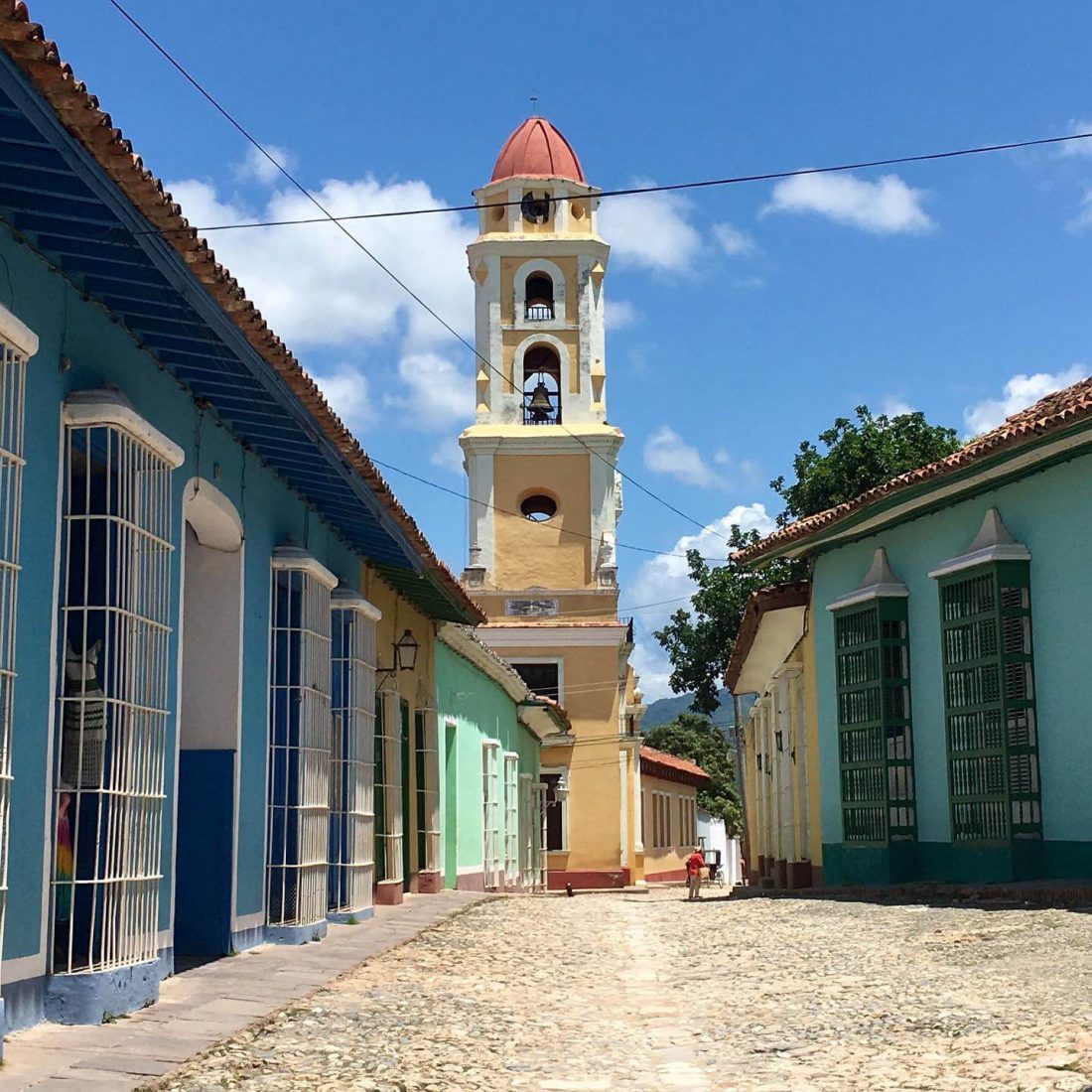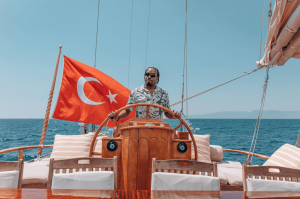Cold winter days are when most of us start thinking about holidays to warmer climes. In recent times, Cuba has become a popular long-haul getaway, but while most people beat the well-trodden path to Havana or resorts like Varadero, Louise Chandler recently ventured out to the less trendy, but no less inviting Trinidad, Cuba.
Not to be confused with “Trinidad and Tobago”, Cuba’s Trinidad is located in the province of Sancti Spíritus, about a four-hour drive from Havana. A UNESCO World Heritage site packed full of colonial history, Trinidad boasts original buildings painted in pastel colours, quaint court yards and horse drawn carriages that take visitors back to what life might have been like there in the 19th century.

What you will see, and experience is a perfectly preserved Spanish colonial settlement that was developed from the industry of sugar cane harvests and slave labour during the early 19th century. What remains are the colonial-style mansions filled with Italian frescoes, crockery and china and French chandeliers.

“The beaches in Trinidad are idyllic in every way boasting golden sands and Cristal clear waters.”
Don’t miss the opportunity to stroll through Plaza Mayor: Trinidad’s remarkably peaceful main square which is the town’s most photographed spot. The palace within the Plaza, called Palacio Cantero, still retains original features plus a tower that tourists can climb up. A word of caution though, climbing up the tower is not for the faint-hearted because what starts as regular stairs turn into rickety wooden steps which eventually become ladders! But if you persevere, the 360-degree view at the top is remarkable.


The beaches in Trinidad are idyllic in every way boasting golden sands and Cristal clear waters. A bus will take you to the nearest beach areas: Playa Ancon or Playa Maria Aguilar, picture perfect beaches which are only about a 15-minute drive from the main city.

This city has a number of musical locations but Casa de la Música is the main musical meeting point. It is a large stone building with a long steep staircase where people can sit and listen to live salsa bands for hours. On any evening you can expect to enjoy up to four bands, who perform with vivid costumes, choreographed dance moves and lively music.
For those who wish to learn Salsa dancing, during your visit to Casa de la Música, check out the professional dancers who will be performing to the music, and showing off their fast foot work. The dancers will venture into the crowd to encourage willing volunteers to dance with them. If they think you’re keen, you may be invited to paid private or group lessons at a nearby bar or venue, so you know you’re learning from the best. It’s a friendly approach so don’t be shy as it’s a good opportunity to try and learn salsa moves (albeit, with an audience of almost 100 people).
“A great way to experience the town is to patronise the local tour guides who offer extensive walking tours of Trinidad.”
Staying on the dancing theme, if you fancy a night of dancing with a difference, be sure to try Disco Ayla: a night club in an underground cave (aka Rave in a Cave). Surrounded by stalactites and stalagmites and also a pumping PA system, swirling lights and bar areas, it’s a surreal and novel experience but also a lot of fun!
A great way to experience the town is to patronise the local tour guides who offer extensive walking tours of Trinidad. The advantage of this is that they are mainly local people who have grown up in the area and will definitely bring the history of the town alive, sharing stories about the people and the buildings.

Don’t be afraid to travel out of the region to experience the beauty of Valley of the Sugar Mills known as “Valle de los Ingenios”; plantation houses and slave house ruins that hark back to the former sugar trade of the 18th and 19th century. It is incredibly moving to see the ruins of a slave house on a plantation (designed to have bigger rooms to encourage couples to have large families who would be born into slavery), heart-breaking to witness, but its preservation on important reminder of past injustices.

The food culture in Trinidad is rich. Deliciously seasonal and reflecting the Caribbean and spit American fusion of cultures. Be sure to try green banana dip, black beans and rice, seafood and meats such as Chicken, chorizo, pork, beef all served with that typical Cuban flair.
Your trip would not be complete without sampling the traditional cocktails like mojito, Cuba Libra and the regional speciality Canchanchara, which is a rum based cocktail with lemon juice and honey!
Below, Louise shares some tips about travelling to Trinidad.
Travel Tips about Trinidad that no one tells you:
Be prepared to haggle for most things such as taxis, souvenirs (although not places like restaurants that come with a set-priced menu).
Some cafes / restaurants have free Wi-Fi (at certain hours). Otherwise be prepared to buy an internet card that allows you to access the internet for an hour (in one go!) depending where you buy it, it will cost 1-3 CUC (Cuban Convertible Peso) per card (hotels and Casas sell them).
Travelling to Trinidad from Havana via a collective taxi takes around four hours. The downside: You could find yourself in a cramped 1950s car with strangers. In my collective taxi were two ladies from America, two guys from Greece and two ladies from Switzerland so we made the best of the journey and had a good giggle, including car karaoke! An alternative is air-conditioned coaches which travel to Trinidad at allocated times, taking around seven hours, if you’re happy to stick to their schedule.
I stayed in an AirBnB but Casas Particulares are popular options for accommodation. They are private Cuban houses with rented rooms and many of these homes are beautiful colonial buildings with stunning gardens. Another advantage is that you’ll be staying with locals who can give you lots of helpful tips.

You will need to change your currency (Pound Sterling offers a better exchange rate than the dollar) at the Cadeca – where you can exchange your currency to Cuban Pesos. There are a few of them in Trinidad but they are not easily sign posted or labelled so feel free to ask someone where the nearest one is located. Note that Cuba has two types of currency, both the CUC and the Cuban Peso!
Accessing Disco Ayala is tricky as it involves walking uphill, often in the dark, for about 10 minutes on cobbled stones and rocks (which is to be expected given you’re walking to a cave). Along the way is a row of houses with people selling drinks as you walk past, so you won’t be thirsty during the walk, but do be sure to take comfortable shoes for the walking.
Read more Travel articles
Image credits: Louise Chandler/Melan Magazine












